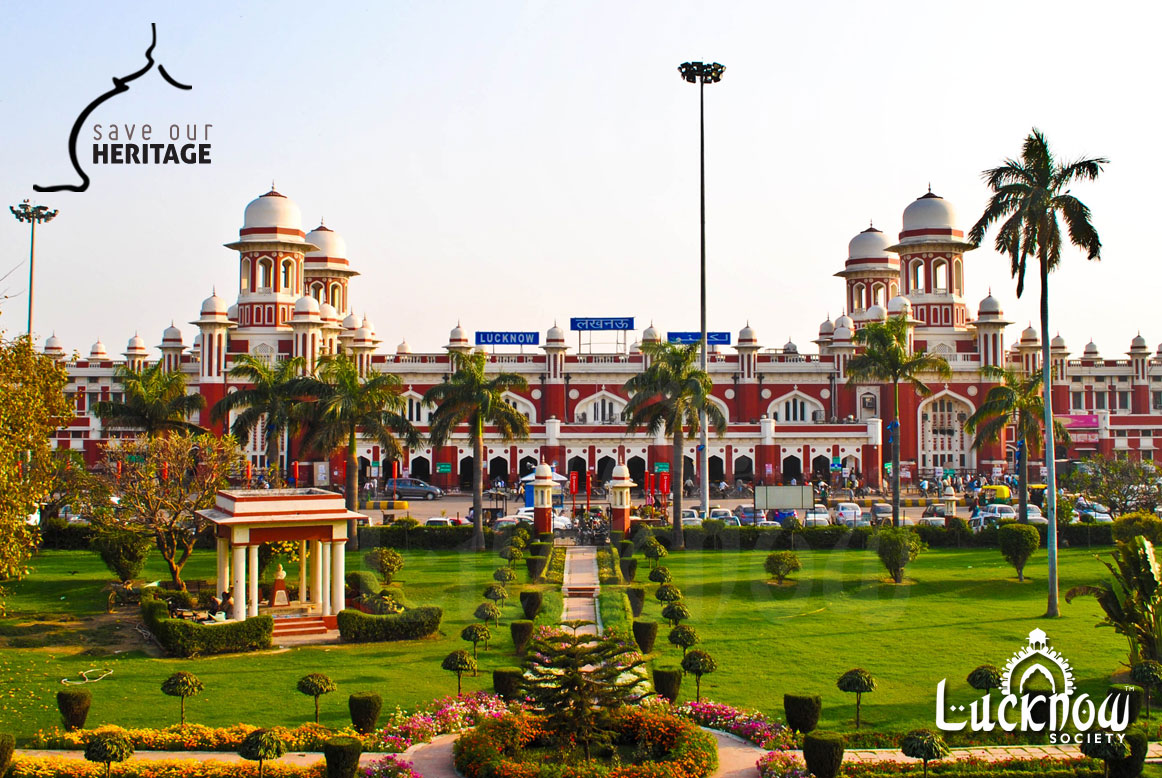
Lucknow Railway Station
Built at a price of ₹ 70 lakhs, Lucknow Charbagh was designed by J. H. Hornimen. The foundation of the railway station was placed in March 1914. The building was completed in 1923.
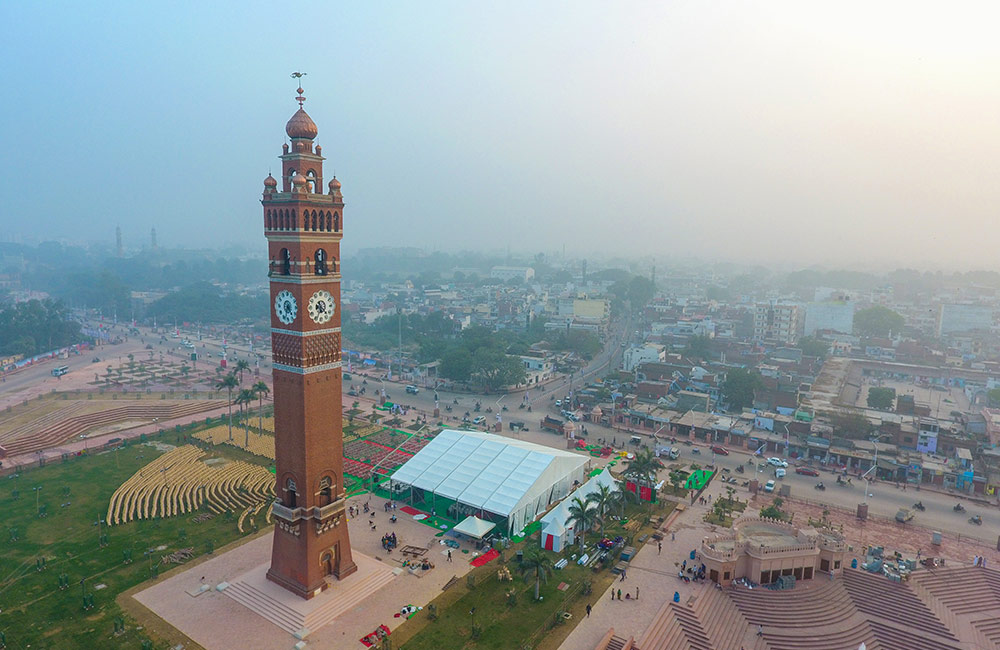
Lucknow Clock-Tower
Husainabad Clock Tower is a clock tower located in the Lucknow city of India. It was constructed in 1881 by Hussainabad Trust to mark the arrival of Sir George Couper, the first lieutenant governor of United Province of Avadh. It was built at a cost of Rs. 1.75 lakhs.
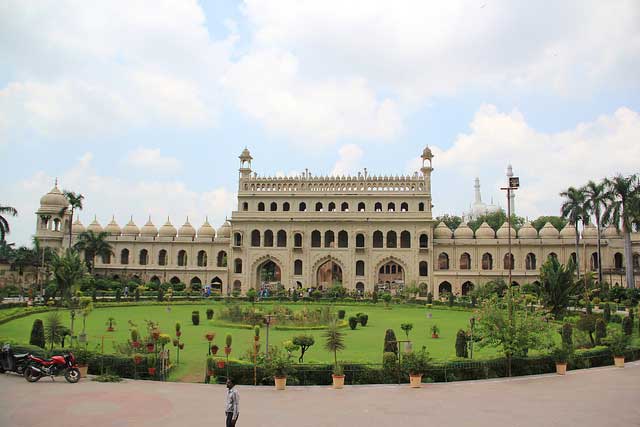
Imambara
An "Imambara" or an "Imambargah" means (House of Imam or Court of Imam); this word is a North Indian origin. An Imambara is also known as Hussaniya, Ashoor Khana. An Imambara is a place or a building with a hall where people assemble for "Majlis" (Mourning Congregations) of Imam Husain and Martyrs of Karbala.
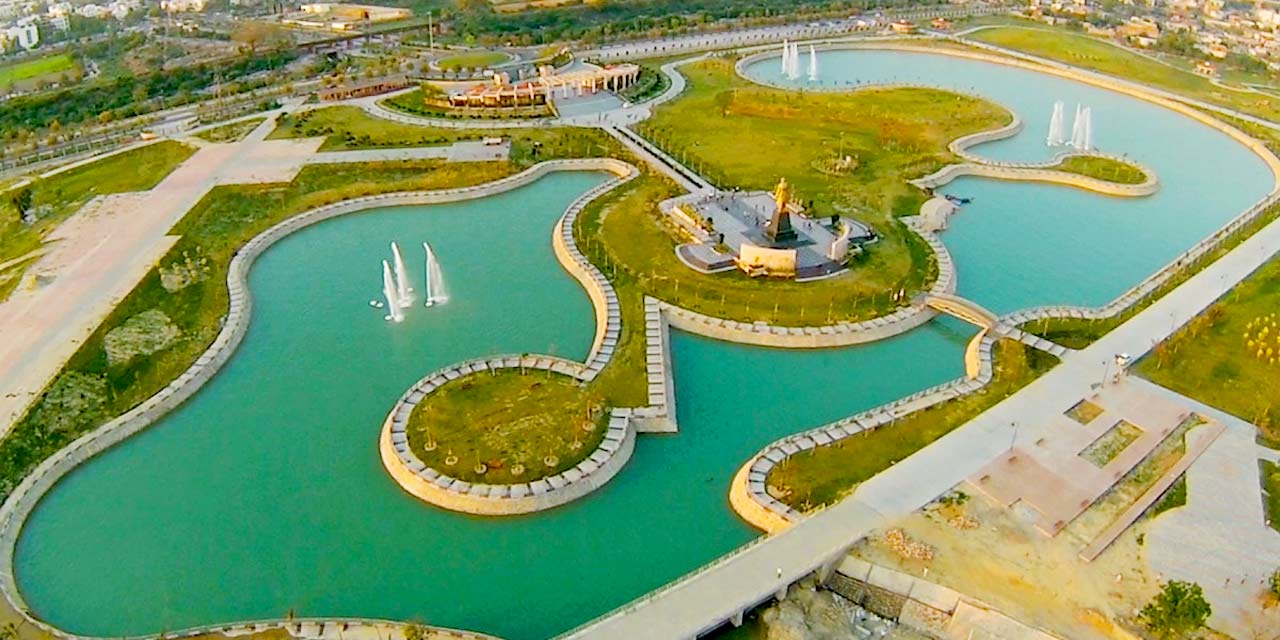
Janeshwar Mishra Park
It was made in memory of late politician Janeshwar Mishra from Samajwadi Party. The park was inaugurated for general public of the city on 5 August 2014. It is claimed to be Asia's 1st largest garden.
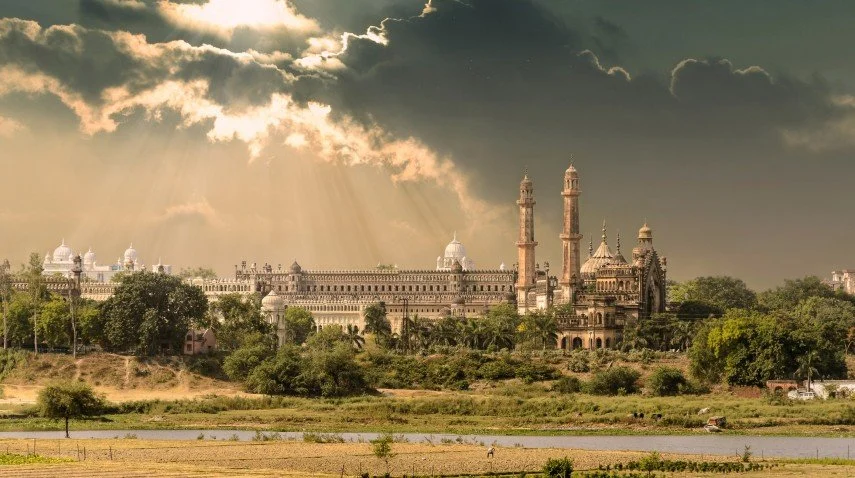
Masjid
Jama Masjid, Tehseenganj, Husainabad, Lucknow is a mosque located at Tahseenganj (previously known as Mustafabad) area of Lucknow. The construction of this mosque was started in the year 1839 A.D.
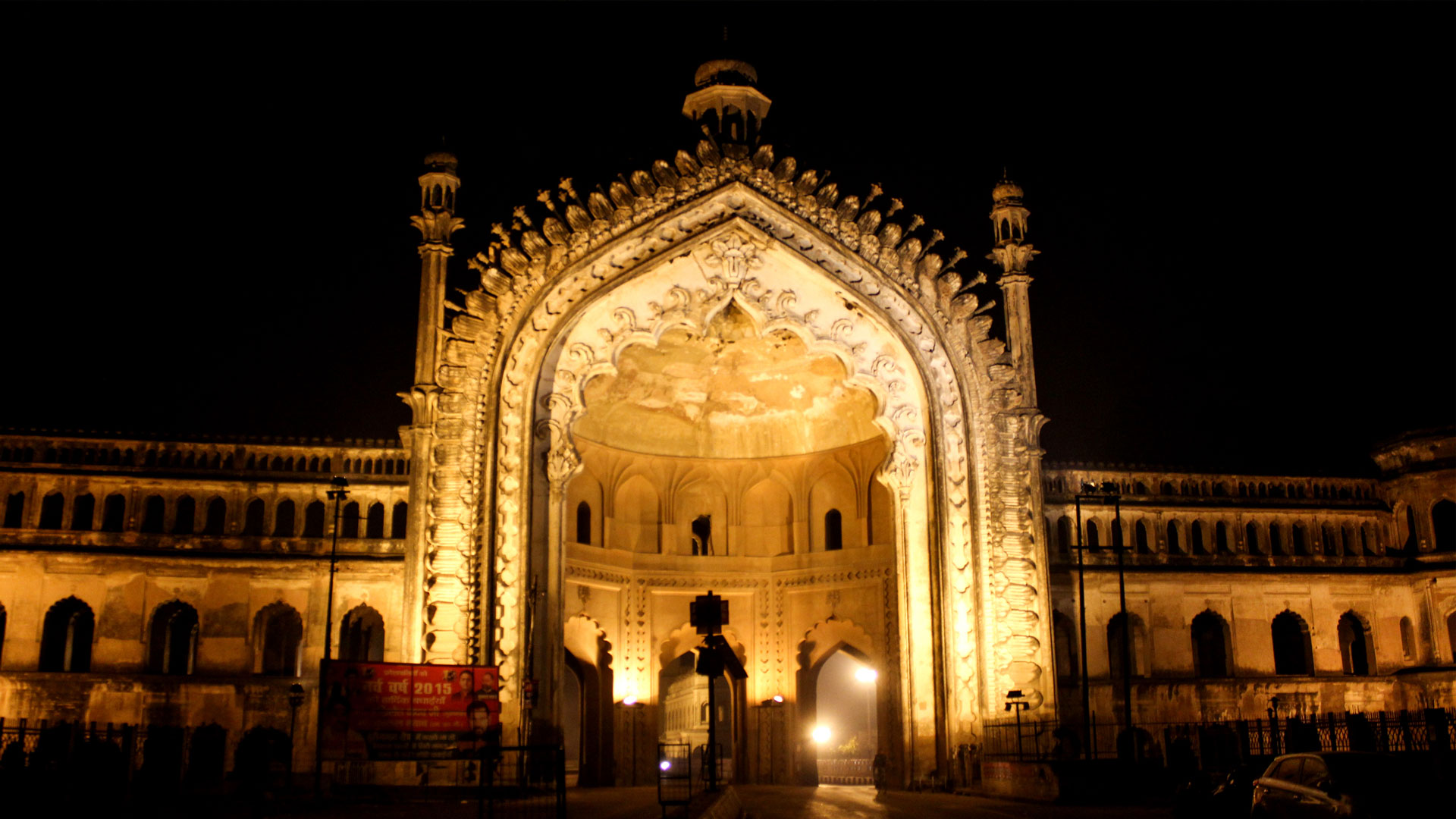
Rumi-Gate
The Rumi Darwaza (Hindi: रूमी दरवाज़ा, Urdu: رومی دروازه, and sometimes known as the Turkish Gate), in Lucknow, Uttar Pradesh, India, is an imposing gateway which was built under the patronage of Nawab Asaf-Ud-daula in 1784. It is an example of Awadhi architecture.

Beautiful Sunset
Sunsets are the prove that no matter what happens, every day can end beautifully.
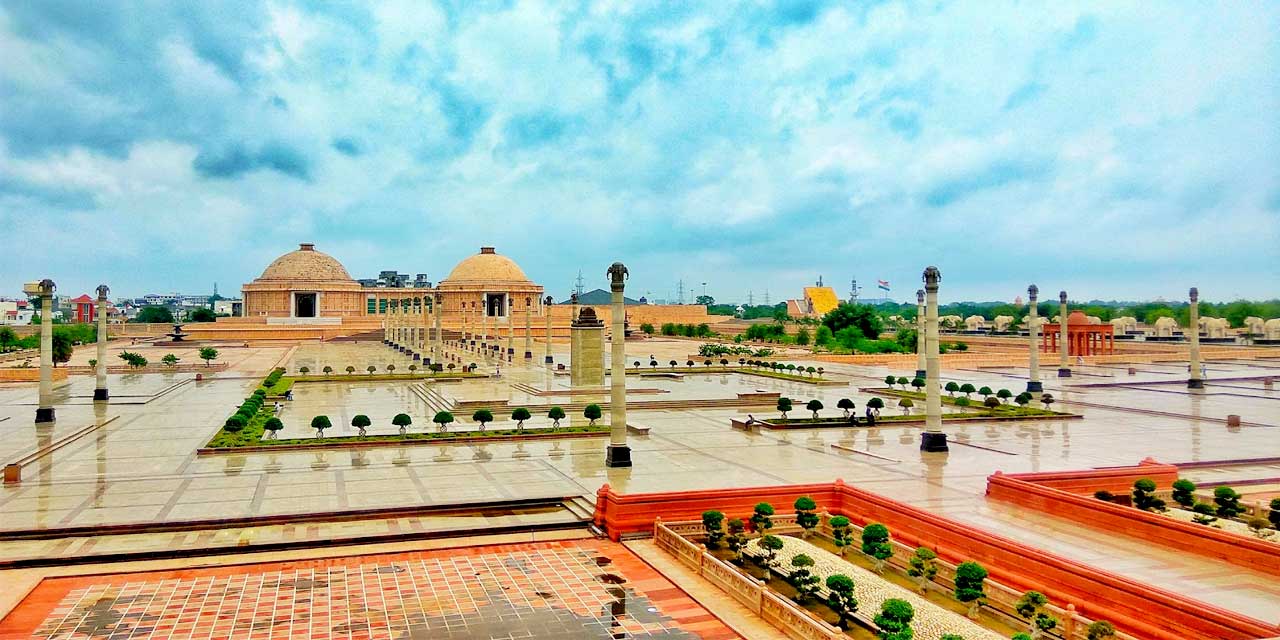
Ambhedhkar Park
The entire memorial is built using red sandstone brought from Rajasthan. It is situated in the posh locality of Gomti Nagar, the largest planned residential colony in India. Cost of the memorial is estimated at 7 billion rupees.

Bhool Bhulaiyya
The large Asfi mosque, the Bhul-bhulaiya (the labyrinth), and Bowli, a step well with running water. Two imposing gateways lead to the main hall. It is said that there are 1024 ways to reach the terrace but only two to come back first gate or the last gate. It is an accidental architecture.
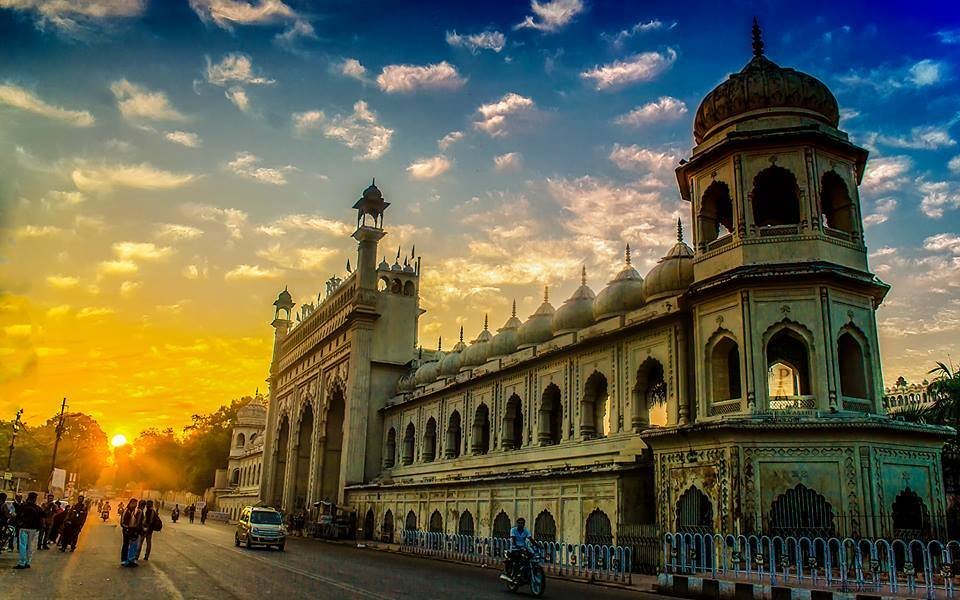
Bada Imambada
Construction of Bara Imambara was started in 1784, a year of a devastating famine, and one of Asaf-ud-Daula's objectives in embarking on this grandiose project was to provide employment for people in the region for almost a decade while the famine lasted.